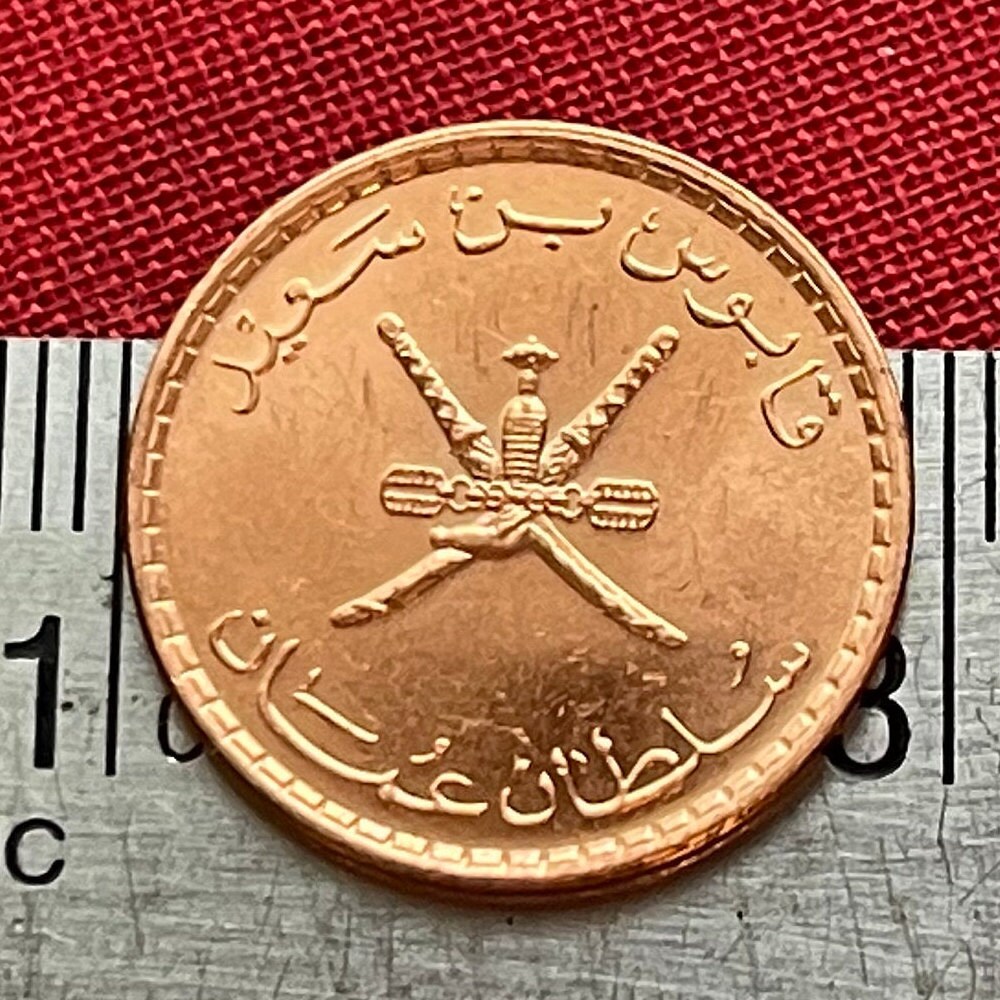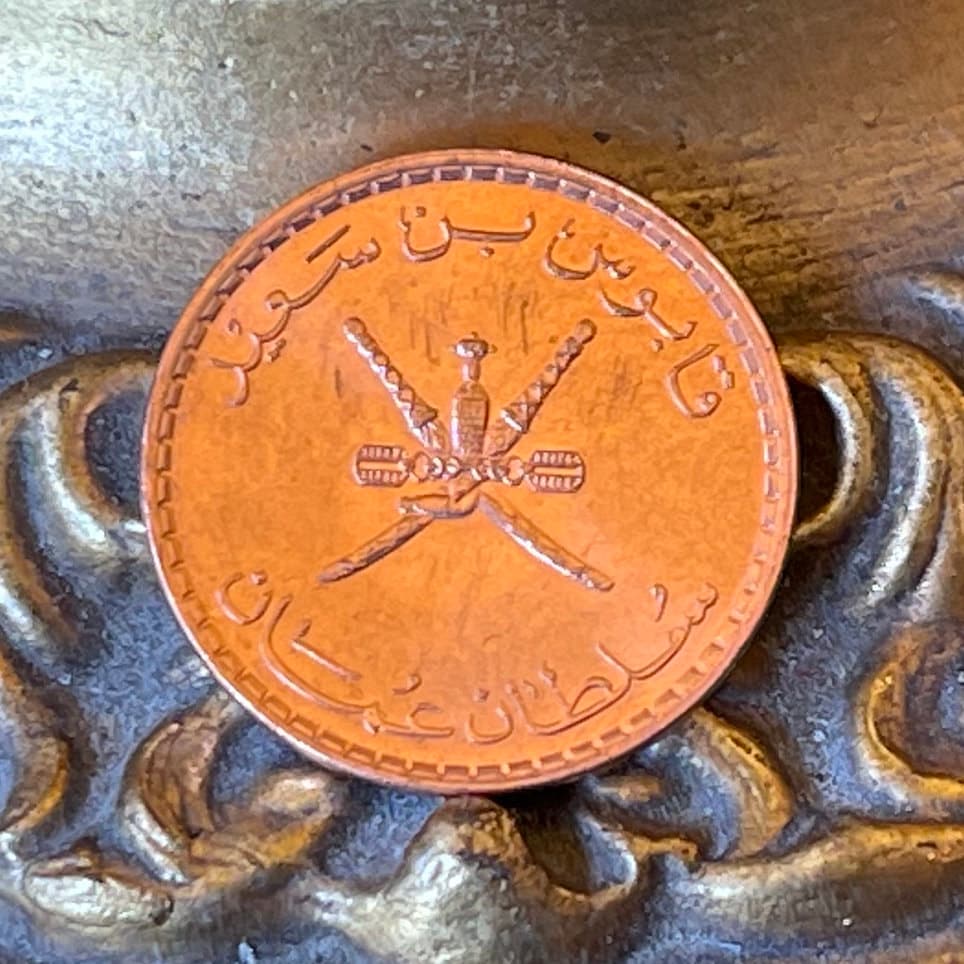elemintalshop
Crossed Swords 5 Baisa Muscat and Oman Authentic Coin Money for Jewelry and Craft Making (Khanjar Bo Sayfain)
Crossed Swords 5 Baisa Muscat and Oman Authentic Coin Money for Jewelry and Craft Making (Khanjar Bo Sayfain)
Couldn't load pickup availability
Crossed Swords 5 Baisa Muscat and Oman Authentic Coin Money for Jewelry and Craft Making (Khanjar Bo Sayfain)
Obverse: National arms
Lettering:
قابوس بن سعيد
سلطان عمان
Reverse: Value and dates
Lettering:
بيسة
۵
١٤٢٩
Features
Issuer Muscat and Oman
Sultan Said bin Taimur (1932-1970)
Type Standard circulation coin
Year 1390 (1970)
Calendar Islamic (Hijri)
Value 2 Baisa (0.002)
Currency New Saidi rial (1970)
Composition Bronze
Weight 1.75 g
Diameter 16 mm
Thickness 1.27 mm
Shape Round
Orientation Medal alignment ↑↑
Demonetized Yes
Number N# 7268
References KM# 36, Schön# 27
Wikipedia:
The national emblem of Oman (Arabic: شعار سلطنة عمان) is Khanjar Bo Sayfain, an insignia consisting of a khanjar inside its sheath that is superimposed upon two crossed swords. Adopted in the 18th century as the badge of the Omani royal family, it subsequently became the national emblem of the Sultanate of Oman.
History
The national emblem was first designed in the mid-18th century, when it was adopted as the royal crest of the Al Said dynasty. Its usage was expanded when it subsequently became the national emblem of the sultanate. This occurred during the reign of either Faisal bin Turki (1888–1913) or Taimur bin Feisal (1913–1932). The emblem was later incorporated onto the canton of the country's national flag in 1970. Moreover, in order to distinguish "directly royal entities" and create a distinct symbol for these organizations, a crown was added to the top of the national emblem.
Symbolism
According to the Omani Ministry of Foreign Affairs, the khanjar – along with the two crossed swords – symbolize the historic weapons utilized by the people of Oman. They are attached together by an embellished [waist belt with its Khanjar at the centre.] The khanjar itself is a national symbol of the sultanate, and is still worn by Omani men as a "ceremonial dagger" for formal occasions.
*******
The Sultanate of Muscat and Oman (Arabic: سلطنة مسقط وعمان Salṭanat Masqaṭ wa-‘Umān) also known briefly as the State of Muscat and Oman (دولة مسقط وعمان) under the rule of Timur ibn Faisal. A sovereign state that encompassed the present-day Sultanate of Oman and parts of present-day United Arab Emirates and Gwadar, Pakistan, in the second half of the 19th century and 20th century. Ruled by the Al Busaid monarchs, it was established as a result of the partition of the Omani empire upon the death of its last ruler Said ibn Sultan of the Al Busaid dynasty. The Sultanate transitioned into a new form of government after the palace coup of 23 July 1970 in which the sultan Said ibn Timur was immediately deposed in favor of his son Qaboos ibn Said.
Share










4 stars review from Shannon









